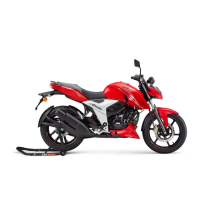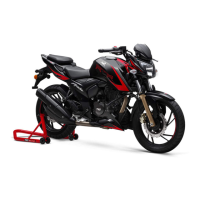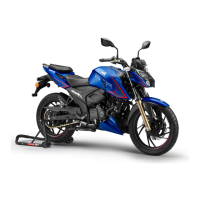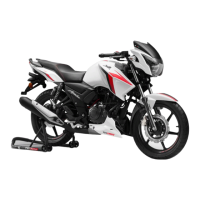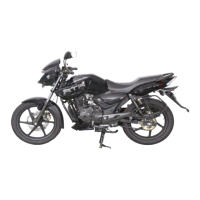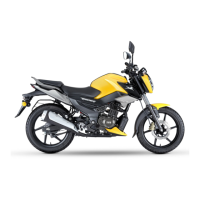2
Anti-Lock Brake System (ABS)
Your motorcycle is fitted with an Anti-lock braking system (ABS) which is designed to prevent skidding and help riders
to maintain steering control during emergency-stopping situation in dry or wet roads, loose gravels etc. Incase of
single channel ABS system, the ABS system is provided only on the front brake whereas dual channel system has the
ABS system on both front and rear brakes.
How does ABS work?
When a rider applies the front brake (in single channel system) or any of the brake (in dual channel system) continuously,
as he detects a dangerous obstacle in dry or wet roads, loose gravels etc. transmits an excessive brake force to the
wheels. This excessive force may cause the wheels to stop spinning and leads to lose of road grip. With no firm
contact between the tire’s contact patch and the road surface, the bike becomes unstable and a crash is imminent.
The slipping wheels on a riding surface results in losing control of whole motorcycle which usually occurs in fractions
of a second. Restoring traction while keeping the bike balanced is only a result of luck, or extreme training, as is
the case of professional stunt riders who drift. Preventing the wheels from slipping due to excessive braking force
compensates losing control and help the rider to maneuver the vehicle and to avoid accidents.
So what the ABS does is actually limiting the braking force exerted by the rider by either squeezing the lever and keep
the wheel spinning. Once the imminence of the locking (and therefore skidding) is avoided, the system re-applies the
maximum braking force until the next skid is anticipated. By limiting the max force of the braking maneuver, the ABS
systems practically allow the riders to use the greatest stopping force possible without locking the wheels.
How does the ABS understands the wheel locking?
The ABS uses continuous wheel speed monitoring system; wheel speed sensors and toner rings and a Hydraulic
Electronic Control Unit (HECU).
During normal operation the ABS works similar to a normal brake. The speed sensors fitted on the both the wheels
(incase of dual channel ABS) measures the rotational speed of the wheels, when the wheel speed reduces rapidly
i.e. wheels tends to lock, the HECU modulates the pressure in the brake circuit and thereby prevents the wheels
from locking.
ANTI-LOCK BRAKING SYSTEM
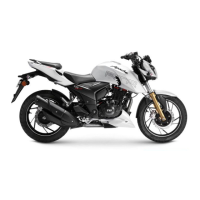
